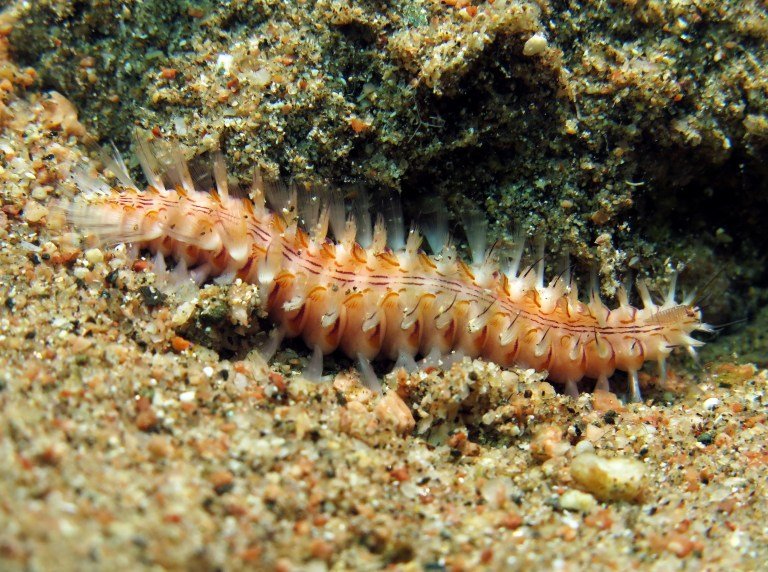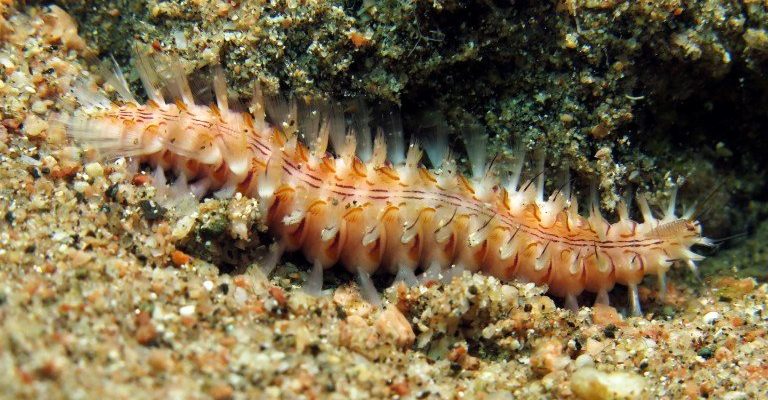
First, it’s important to know what bristle worms are. These creatures belong to a group of worms called *polychaetes* and show up in a variety of marine environments. While some might consider them pests, others see them as a natural part of the ecosystem. They may seem harmless, but their relationship with corals is where things get murky. So, let’s explore this relationship—starting from the ground (or reef) up.
Understanding Bristle Worms
Bristle worms are fascinating creatures. They’re typically long and segmented, and they come in various colors, ranging from bright pink to dark brown. Think of them as the hardworking gardeners of the ocean floor. They play a crucial role in breaking down organic matter and recycling nutrients back into the ecosystem. While they live in almost every ocean habitat, they’re especially fond of coral reefs, where they find shelter and food.
One interesting thing about these worms is their bristles—sharp little hairs on their bodies. These bristles are a defense mechanism. When threatened, they can readily detach, causing irritation to potential predators, or in some cases, curious snorkelers. But here’s the catch: these bristles don’t just irritate predators; they can also irritate coral polyps.
How Bristle Worms Interact With Coral
So, what’s the deal with bristle worms and coral? You might be wondering if these worms actually harm corals. The answer isn’t black and white. In some cases, bristle worms can feed on dead or dying coral, which can lead to further damage in already stressed reef environments. But in a healthy reef, they often exist without causing harm.
Corals, like all living organisms, can experience stress. When they’re feeling under the weather due to factors like pollution, rising temperatures, or disease, they become more susceptible to harm from any source—including bristle worms. It’s not that these worms are intentionally causing issues, but rather that they can take advantage of weakened coral.
Myth vs. Fact: Debunking Common Beliefs
With so many voices in the conversation about marine life, it’s easy to get lost in misconceptions. Many people believe that bristle worms are solely responsible for coral irritation, but that’s just not the case. Exploring this relationship helps clarify the broader picture.
For one, many forms of stress affect corals, such as *nutrient overload*, *invasive species*, and *habitat destruction*. In fact, when you focus solely on bristle worms, you might overlook the bigger issues at play. Coral reefs are delicate ecosystems that require balanced conditions to thrive. Blaming bristle worms might seem easier, but it’s misleading.
Another myth is that all bristle worms are harmful to the reef. In truth, many species help clean up the ocean floor and contribute to healthy coral environments. So, before pointing fingers, it’s worth examining the whole marine ecosystem and considering various factors affecting coral health.
Assessing Coral Health and Bristle Worm Impact
Understanding coral health is essential to evaluating the impact of bristle worms. Healthy corals can often fend off minor irritations, including those from bristle worms. Factors like water clarity, temperature, and nutrient levels play crucial roles in coral resilience.
To check the health of corals, you might notice signs such as *color changes*, or *bleaching*. Healthy corals are vibrant, while stressed corals can appear dull or even white due to the expulsion of the symbiotic algae they depend on. If bristle worms are observed during these periods of stress, it’s easy to misattribute the cause of irritation.
Taking the time to monitor environmental conditions regularly helps manage both coral and bristle worm populations. Practices like maintaining water quality and reducing pollutants contribute to healthier reefs.
What You Can Do to Protect Coral Reefs
So, how can we protect our beautiful coral reefs and their inhabitants? It might feel overwhelming at times, but small actions can lead to big changes. Here are a few tips to keep in mind:
- Reduce Pollution: Be mindful of waste disposal. Plastic pollution and nutrient runoff can wreak havoc on marine ecosystems.
- Practice Responsible Diving: If you dive or snorkel, avoid touching corals. Damage from human interaction can leave them vulnerable.
- Support Conservation Efforts: Get involved with local marine conservation programs. Every bit helps in protecting these ecosystems.
- Educate Others: Share what you learn about corals and bristle worms to raise awareness among friends and family.
By taking these steps, we can help create a thriving environment for both corals and bristle worms.
The Bigger Picture: Marine Ecosystem Interactions
While bristle worms can spark debates, it’s vital to recognize that they are just a piece of the puzzle in a larger marine ecosystem. Each organism, from the tiniest plankton to the largest whales, plays a part in maintaining balance.
When considering coral irritation, it’s beneficial to look beyond isolated incidents. Marine ecosystems are intricate, and many relationships exist among organisms. The health of coral reefs often reflects broader environmental conditions, indicating whether the ecosystem is thriving or in trouble.
Ultimately, understanding the complex interactions between bristle worms and coral is about appreciating the full spectrum of marine life. Instead of viewing bristle worms as the enemy, think of them as part of a greater ecological narrative.
Final Thoughts on Bristle Worms and Coral
In conclusion, bristle worms and coral irritation is more than just a myth or a fact—it’s a nuanced topic that requires a closer look. These worms, while potentially irritating to corals in specific circumstances, aren’t the sole cause of coral distress. They play a role in the vast and complicated narrative of ocean ecosystems.
As responsible stewards of our environment, we can help ensure that these ecosystems flourish, benefiting both the creatures that inhabit them and us. So, the next time you hear about bristle worms causing trouble, remember to consider the whole picture. It’s all about balance, understanding, and taking action for a healthier future in our oceans.

